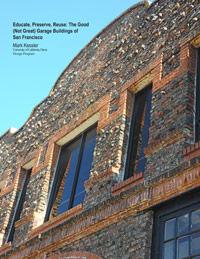Educate, Preserve, Reuse: The Good (Not Great) Garage Buildings of San Francisco

While the preservation movement has made great strides in saving landmarks and historical districts, it has been less effective in protecting good, not great, buildings. Development continues to threaten existing, adaptable structures that make significant contributions to the scale and character of the city. When older buildings are tossed away, material is wasted and architectural diversity declines.
This paper studies one such example, the early 20th-century garage of San Francisco. Presenting an historicist façade over an industrial interior, the garage is typical of infill buildings that are contextual and enhance the street. These buildings are vulnerable because they financially under-utilize their lots. They are taken for granted, because of age, use and anonymity. A heightened awareness is key to their survival.
To raise awareness, the author led a class of undergraduate design students in the organization of a building typology. The typological approach educates by engaging the observer in the relationships that bind the buildings together.
Concern for these structures is compatible with a broad view of sustainability that encompasses man-made as well as natural resources, cities as well as ecosystems. If we regard sustainability as a mandate to protect the diverse systems that sustain us, the study and appreciation of these systems is a necessary precursor to maintaining them. This study provides one example of how a sustainable approach to the diverse architecture of the city can reinvigorate the preservation movement.


Add comment
Log in to post comments